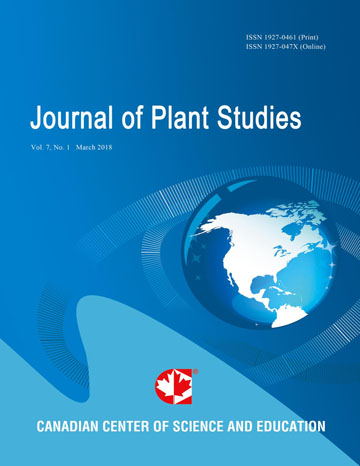Evaluation of Palmistichus elaeisis Delvare & LaSalle (Hymenoptera: Eulophidae) as Parasitoid of the Sarsina violascens Herrich-Schaeffer (Lepidoptera: Lymantriidae)
- Bruno Zache
- Ronelza Zache
- Carlos Wilcken
Abstract
This is the first report on the parasitoid Palmistichus elaeisis, genus Eulophidae, found in the field parasitizing pupae of defoliating eucalyptus. Lepidopterous pests occur in eucalyptus plantations in Brazil, reaching high population levels. Due to the complexity of pest control in eucalyptus forests, alternative control methods have been proposed, for instance biological control through use of parasitoids. Natural enemies play an important role in regulating host populations because their larvae feed on the eggs, larvae, pupae or adults of other insects. The parasitic Hymenoptera are important agents in biological control programs against forest pests, and may provide economic and environmental benefits. The generalist endoparasitoid Palmistichus elaeisis Delvare and LaSalle, 1993 (Hymenoptera: Eulophidae) can develop in its host’s pupae, which overcome the host’s physiology and can therefore be used for biological control of agricultural and forest pests. This study aimed to evaluate the impact of P. elaeisis as a pupal parasitoid of S. violascens in providing a potential alternative to chemical control of the pest and creation of an alternative host. The experiment was developed in the Laboratory for Biological Control of Forest Pests, Universidade Estadual Paulista "Julio Mesquita Filho”. Parasitoids used in this test were originally collected on pupae of E. eucerus. (Lepidoptera: Riodinidae) in eucalyptus plantations at Lençois Paulistas, São Paulo state, Brazil, in 2011. Thereafter, a laboratory culture has been maintained, using pupae of Spodoptera frugiperda (J. E. Smith) (Lep.: Noctuidae) as hosts. S. violascens eggs were collected in a eucalyptus clonal plantation in Sao Paulo state (Brazil). Larvae were reared under ambient conditions on Eucalyptus urophylla S.T. Blake (Myrtaceae) leaves. The following parameters were determined: parasitism level, numbers of emerged and non-emerged parasitoids and duration of egg-adult cycle. The S. violascens pupae were dissected to evaluate the non-emerged parasitoids. The parasitism level reached 100%, with a 100% emergence rate. It was verified that 113.2±0.8 parasitoids emerged per individual pupa versus only 0.7±0.1 that did not emerge. The P. elaeisis egg-adult cycle was 20.3±0.6 days in S. violascens pupae. This opens new perspectives for utilizing this parasitoid in biological control programs against caterpillars important to forestry. Sarsina violascens in Brazil.
 PDF
PDF
